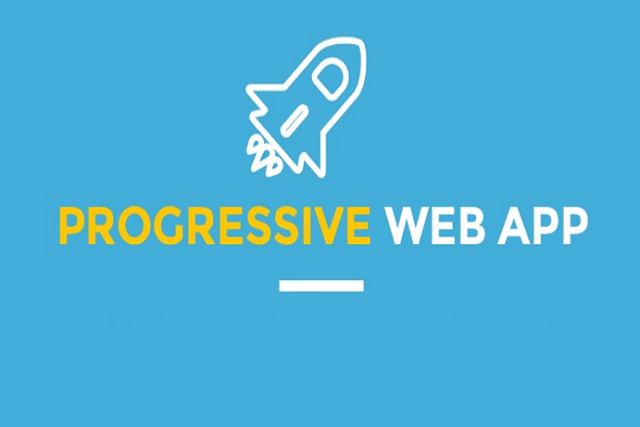With the constant evolution of technology and the increasing dependence on mobile devices, the demand for seamless and engaging user experiences has never been higher. Progressive Web Apps (PWAs) have emerged as a powerful solution to bridge the gap between native mobile apps and traditional websites. PWAs combine the best features of both worlds, offering users a fast, reliable, and immersive experience, while providing developers with a cost-effective and efficient platform for mobile app development Kuwait.
In this article, we delve into the concept of PWAs, explore their rising popularity, and highlight the ways they enhance user experience and engagement.
Understanding Progressive Web Apps (PWAs)
Progressive Web Apps are a revolutionary advancement in web development that leverage modern web capabilities to deliver an app-like experience to users. They are designed to be accessible on any device with a web browser, regardless of the operating system. PWAs are built using standard web technologies such as HTML, CSS, and JavaScript but are powered by service workers – background scripts that allow for offline functionality, caching, and push notifications. This makes PWAs incredibly responsive and capable of delivering smooth, fast-loading experiences, even in low or no network conditions.
Key Features of PWAs
PWAs offer several essential features that contribute to their popularity and success:
A. Offline Functionality: Thanks to service workers, PWAs can cache essential assets and content, enabling users to access certain parts of the app even when offline. This feature is especially useful for users in areas with poor connectivity or during temporary network outages.
B. Responsive Design: PWAs are designed to adapt seamlessly to various screen sizes and resolutions, making them ideal for both desktop and mobile devices. This ensures a consistent and enjoyable user experience across all platforms.
C. App-like Interactions: PWAs provide smooth, app-like interactions such as swipe gestures, animated transitions, and full-screen browsing, giving users the impression of using a native mobile application.
D. Secure Connections: PWAs must be served over HTTPS to ensure data security and user trust. This level of security is crucial for engaging users and protecting their sensitive information.
E. Push Notifications: PWAs can send push notifications to users, even when the app is not actively running. This feature helps in re-engaging users and keeping them informed about updates or new content.
The Rising Popularity of PWAs
The popularity of PWAs has grown significantly in recent years, driven by several key factors:
- Improved User Experience: PWAs deliver a seamless and responsive user experience, eliminating the need for users to download and install native apps, leading to increased user satisfaction.
- Cost-effectiveness: Creating a single PWA that is compatible with several platforms is less expensive than creating different native apps for different operating systems.
- Easy Accessibility: Unlike native apps that require approval and distribution through app stores, PWAs are instantly accessible through web browsers, making them readily available to users without any installation barriers.
- Faster Loading Speeds: PWAs’ ability to cache content and assets locally results in faster loading times, reducing bounce rates and increasing user engagement.
- SEO Benefits: As PWAs are web-based, they are discoverable by search engines, improving their visibility and search rankings.
Enhancing User Engagement with PWAs
PWAs have revolutionized user engagement by providing a rich and immersive experience that encourages prolonged interactions:
Responsiveness and Performance:
PWAs are designed to load quickly and respond instantly to user actions, ensuring a smooth and enjoyable experience that keeps users engaged.
Personalization:
PWAs can leverage user data and preferences to deliver personalized content and recommendations, fostering a stronger connection with users.
Push Notifications:
The ability to send push notifications to users, even when the app is not in use, allows businesses to re-engage users with timely updates, promotions, or relevant content.
Offline Accessibility:
With offline functionality, users can continue using PWAs even when disconnected, leading to increased user retention and satisfaction.
Increased Reach:
PWAs can be shared via URLs, enabling easy sharing and virality, extending their reach and potential audience.
Challenges and Future Outlook
Despite their numerous advantages, PWAs face some challenges, including limited support on older browsers and devices. However, as browsers continue to improve and adopt new web standards, the limitations will likely diminish. The future outlook for PWAs remains promising, as more businesses and developers recognize their potential to revolutionize the user experience and engagement.
Conclusion
The rise of Progressive Web Apps (PWAs) signifies a significant shift in the way users interact with digital content and applications. By blending the best elements of native apps and web technology, PWAs offer a seamless, responsive, and immersive user experience that enhances engagement and satisfaction. As the demand for fast, reliable, and accessible digital experiences continues to grow, PWAs are poised to play a crucial role in shaping the future of app development and web interactions. Embracing PWAs opens up a world of opportunities for businesses to engage their audience, drive user retention, and stay at the forefront of the digital revolution.



